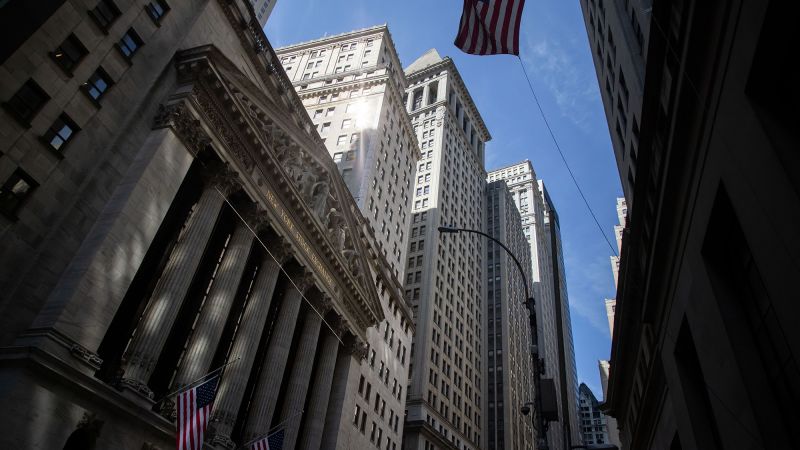On Friday, the US stock market experienced a significant rally, significantly influenced by China’s expressed interest in engaging in trade discussions and a robust jobs report that exceeded analysts’ expectations. The Dow Jones Industrial Average surged by 570 points, translating to an increase of 1.4%. Other major indices followed suit, with the S&P 500 rising by 1.6% and the technology-heavy Nasdaq Composite gaining 1.7%. Investors reacted positively to these developments, signaling renewed optimism within the financial markets.
The S&P 500 was poised for a historical achievement with the potential for its first nine-day winning streak since November 2004. According to data provided by FactSet, while the index had recorded multiple shorter streaks in the intervening years, a consecutive nine-day winning streak had eluded it for nearly two decades. This positive momentum was indicative of a broader recovery, aiming to reverse the losses sustained since the announcement of “reciprocal” tariffs by former President Donald Trump on April 2.
The Dow Jones also aimed for its own nine-day winning streak since December 2023, though it still remained over 2% down from its price at the time of the tariff announcement. The kickoff for this rally came from the Bureau of Labor Statistics, which announced that the economy had added an impressive 177,000 jobs in April, surpassing expectations of approximately 135,000 jobs. Chris Zaccarelli, Chief Investment Officer at Northlight Asset Management, noted that this exceeded expectations and alleviated some recession fears; however, he also pointed out that the impact of tariffs remained a critical concern.
Investors further capitalized on the rise as positive reports emerged from a Wall Street Journal article indicating that China was contemplating actions to alleviate US concerns about its role in the international fentanyl trade. This, in conjunction with President Trump’s softened stance on the ongoing US-China trade conflict, suggested a potential thaw in relations that had previously been laden with tension. A spokesperson from China’s Commerce Ministry confirmed the evaluation of American proposals for trade negotiations, signifying a possible shift towards collaboration and negotiations.
While the jobs report hinted at a strong labor market, concerns lingered regarding the influence of tariffs on economic health. David Russell, who serves as Global Head of Market Strategy, asserted that the strong employment numbers provided policymakers time to devise solutions to trade tensions without triggering a recession. Market reactions indicated a potential path for resolving trade issues, but investors remained wary of ongoing uncertainties. Given recent commerce data that revealed an economic contraction, Wall Street’s mood was fluctuating between caution and optimism.
The CNN Fear and Greed Index illustrated this sentiment shift, waffling back into a state of “fear” after briefly entering “neutral.” Investors expressed caution toward the remaining policy uncertainties, primarily in light of remarks from key figures such as Zaccarelli, who cast doubt on how the trade landscape would evolve in the following months.
Adding to the complexities of the trading environment, President Trump continued to publicly criticize the Federal Reserve and advocated for interest rate cuts, claiming lackluster inflation as justification for easing monetary policy. In response to the strong job numbers, market traders began reducing their expectations of an imminent rate cut in June, showcasing a decline in likelihood from a previous 55% to 36.6%.
Despite recent cooling inflation rates, they continued to hover above the Federal Reserve’s 2% target, prompting market analysts like Gina Bolvin to note that the latest job report allows the Fed additional leeway to focus on managing inflation effectively. Major financial institutions like Barclays and Goldman Sachs also adjusted their projections, pushing anticipated rate cuts to July instead of June.
Additionally, the yields on the 10-year Treasury rose above 4.3%, while the US dollar index saw a minor decline of 0.4%. The week’s optimisms in the market were encouraged by positive earnings reports from major tech giants, including Meta and Microsoft, both exhibiting strong performances that fueled investor confidence in the resilience of the sector. Meta shares, for instance, hiked by 4.6%, while Microsoft saw a 2.5% increase after notable earnings announcements earlier in the week.
In the context of the global market, European indices reflected similar upward trends, with Germany’s DAX rising by 2.62% and Japan’s Nikkei 225 also gaining ground. As the US stock market aimed for further milestones, analysts continued to note critical issues on the horizon, indicating that while Friday’s gains were promising, the journey through this volatile economic landscape would continue to demand careful navigation by investors and policymakers alike.



